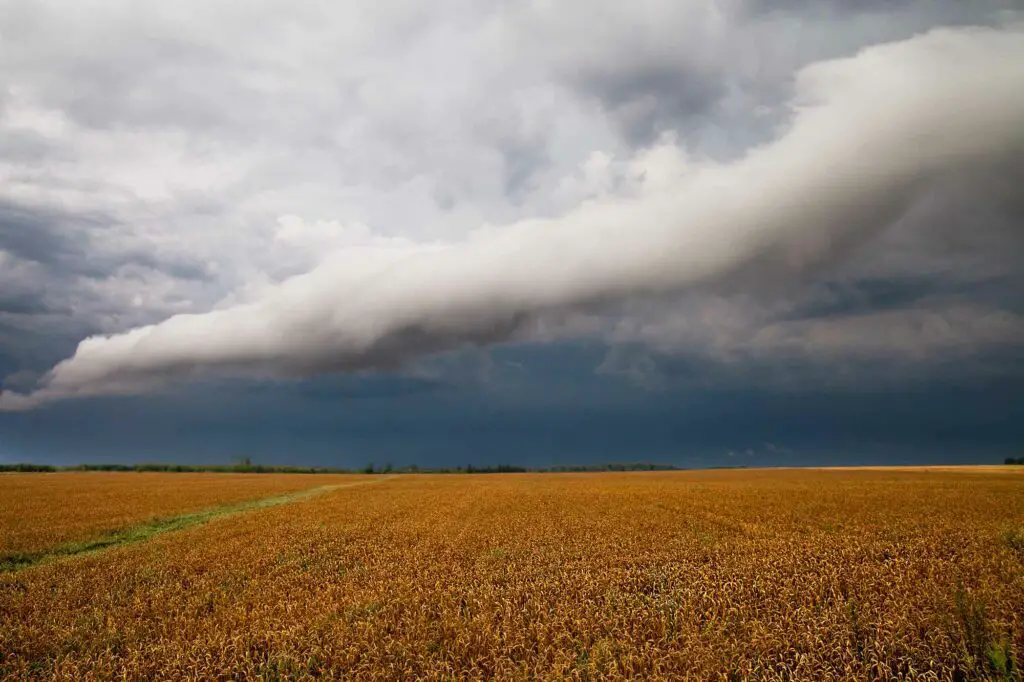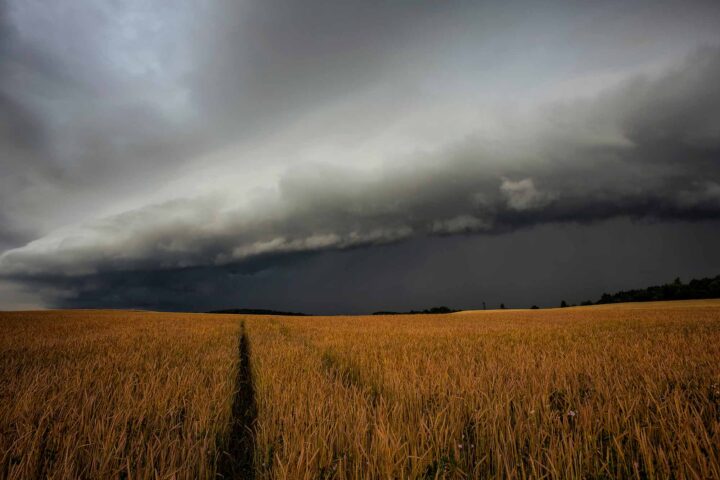Un outflow boundary è un termine meteorologico che si riferisce al confine tra due masse d'aria creato dal downdraft di un temporale. Se vi è mai capitato di stare all'aperto durante un temporale e di sentire la fresca corrente d'aria che precede il temporale, avete sperimentato un outflow boundary.
Gli outflow boundaries non sono responsabili solo di queste raffiche di vento e possono innescare nuove tempeste, soprattutto quando gli outflow boundaries di altre tempeste si scontrano.
Che cos'è un confine di deflusso?
Un outflow boundary è una caratteristica meteorologica che si forma quando l'aria fredda scende e si allontana dalla tempesta (un downdraft), sollevando l'aria calda che la circonda. Sebbene questo deflusso avvenga in tutte le direzioni, il flusso sarà più forte nella direzione in cui soffiano i venti ai livelli più bassi, vicino alla superficie.
Un outflow boundary è il più forte vicino al suo punto di origine e si dissipa man mano che si espande verso l'esterno. Questo non avviene immediatamente; alcuni confini possono viaggiare per centinaia di chilometri. Spesso sono visibili al suolo come un ripiano o un rotolo. nuvole e sul radar come una sottile linea di deboli ritorni. Qui di seguito abbiamo mostrato un esempio di outflow boundary sul radar.
Come si formano i confini del deflusso?
Le frontiere di deflusso si formano quando l'aria fredda di un temporale si spinge al di sotto dell'aria più calda che precede il temporale. L'aria densa e fredda associata alle frontiere di deflusso può abbassare rapidamente le temperature e produrre forti venti.
Questo limite è talvolta visibile come una linea di nubi cumuliformi sul bordo anteriore di un temporale (chiamate anche nubi a mensola o a rullo). È spesso chiaramente visibile sul radar, soprattutto in modalità "velocity", a causa di insetti, polvere e altri detriti soffiati in aria dall'improvvisa raffica di vento sul bordo del confine di deflusso.
I confini di deflusso sono talvolta associati allo sviluppo di nubi e temporali. Quando questi confini interagiscono con l'aria calda e umida e tra loro, possono contribuire a innescare nuove nubi e temporali. Sul radar, la direzione di un outflow boundary può essere determinata dalla sua curvatura.
Se i confini di deflusso di due tempeste fossero puntati l'uno verso l'altro in una giornata calda e umida, un meteorologo si aspetterebbe la probabile formazione di un nuovo rovescio o temporale nel punto in cui questi confini si scontrano.
Limiti di deflusso e maltempo
I confini del flusso in uscita sono chiamati anche raffiche frontiper le raffiche improvvise, che spesso raggiungono le 30-50 miglia orarie. Pur non essendo necessariamente dannosi, questi venti possono facilmente raccogliere e lanciare oggetti leggeri non fissati al suolo.
In rari casi, il downdraft responsabile dell'outflow boundary può essere estremamente forte in quello che è noto come un microburst. Un microburst è un potente downdraft di aria che può produrre venti superiori a 100 miglia orarie. I microburst sono spesso associati a fenomeni di maltempo, come ad esempio tornado e temporali. Se ciò avviene su una vasta area, si parla di macroburst. Sebbene entrambi siano eventi rari, i microburst sono molto più frequenti.
Sulle aree desertiche, i confini del deflusso possono innescare "haboobs", tempeste di polvere innescate dai venti temporaleschi.

Suggerimenti per rimanere al sicuro durante le condizioni meteorologiche avverse
Le condizioni meteorologiche avverse possono rappresentare una minaccia sia per la vita che per la proprietà. Tuttavia, ci sono diversi accorgimenti che si possono adottare per rimanere al sicuro durante gli eventi atmosferici di forte intensità.
Una delle cose più importanti è tenersi informati sulle ultime condizioni meteorologiche. Potete farlo monitorando i notiziari locali e seguendo le Servizio meteorologico nazionale sui social media. È inoltre essenziale pianificare cosa fare in caso di maltempo. Tra questi vi è la disponibilità di una stanza sicura in casa e la conoscenza del percorso migliore per l'evacuazione in caso di necessità.
Inoltre, è fondamentale avere a portata di mano un kit di emergenza che includa scorte di cibo, acqua e materiale di primo soccorso. L'adozione di queste precauzioni può contribuire a garantire la vostra sicurezza durante gli eventi atmosferici.



